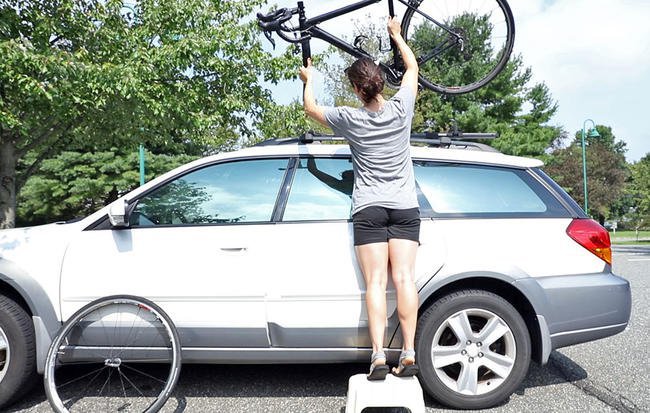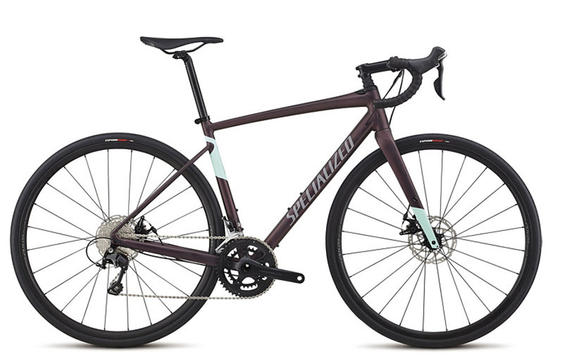While being a short cyclist has its perks (we don’t have to duck in small spaces and can draft off of anyone), it’s no secret that the vertically challenged face unique issues when it comes to sports, and cycling is no exception. From roof racks to toe overlap, there’s a lot to overcome. We’ve rounded up some of our favorite cycling shorties to share their grievances.
A petite rider’s first challenge is simply finding a bike that fits. That’s not easy when companies don’t offer bikes in small-enough sizes or only offer those sizes online. Shopping for a new bike should be fun, but cyclists like five-foot-tall Hannah McClellan, who rides a 42cm, rarely have the opportunity to test-ride a potential new steed in a shop.
“All I want is to be able to take a bike out for a ride and see it in-person before I toss an entire paycheck at it,” McClellan says. “Right now I’m really interested in the new women’s-specific Diverge. I got super psyched that there’s a Specialized demo of the new 2018 bikes at my local bike shop until I realised there’s no way they’ll have one my size. It’s kind of like buying a car based on pictures and specs only, but you never got to test drive and get a feel for how it fits you first.”
RELATED: Specialized’s 2018 Diverge: The Next Evolution in Gravel
Usually a smaller bike means a smaller frame, not smaller wheels. So, your pedals are closer to your wheels, and your toes hit your tyres when you make an aggressive turn. Short cyclists like five-foot-three Molly Hurford are always on the hunt for a model that doesn’t cause toe overlap.
“A lot of companies have come a long way in recent years, but I remember when Raleigh first came out with their women’s cyclocross bike; the 48cm version had such bad toe overlap that the slightest corner became a challenge,” Hurford says. “The problem stems from the fact that correcting toe overlap comes at a major cost for handling ability, so you end up with a bike that feels like a chopper and takes corners even worse when toe overlap is eradicated!” So where’s the sweet spot? “Most companies are still trying to figure it out—but I’ll say that the Raleigh RXC women’s model has made massive strides in cutting down on toe overlap without killing performance.”
A roof rack is one of the more secure ways to transport your bike by car, but cyclists like five-foot-tall Tiffany Tarleton need a little boost to reach it. Some cyclists travel with step stools in their cars for this very reason. Tarleton has nearly solved the issue with a few acrobatics.
“Any time I use the roof rack, I have to climb up on the front seat,” Tarleton says. “I learned how to lean the bike against the side of the car, climb up, then lift up. It was a fun balancing act, as long as I didn’t drop anything.”
Once shorter cyclists find a bike that fits, less-flexible petite cyclists, like five-foot-three Teresa DeMeres, nearly pull their short legs out of their sockets to swing them over their frames.
“One of my frustrations about being a short cyclist is no matter how small my bike is—and I ride a 51cm—getting my legs over my bike without injuring myself is a struggle,” DeMeres says. “Either I strain a muscle trying to hoist my leg over, or I slam a ‘sensitive area’ onto the frame of my bike!”
RELATED: The Perfect Bike Fit
One of the best parts of cycling is making friends through a shared love of the sport. But short riders like me, who run with a tall crew, end up being left out of bike-swapping fun.
I worked at a bike shop where everyone was six foot tall. If someone was on the fence about buying a gravel bike, they could test out a friend’s for the weekend. They would swap bikes during rides just for fun. It was like this cute brotherhood of the traveling bikes that I couldn’t be a part of unless I wanted to risk my life on a 58cm. (I’m five foot three.) I never got to try mountain biking because even our rentals were larges.
Another drawback of being the shortest cyclist in a group of tall friends is that they never fail to tease you for having a tiny bike, says five-foot-three Riley Missel. Yeah, it’s small. Yeah, I’m short. We get it.
“One thing people love about my small bike is that they can plop down on the saddle and shuffle around like it’s a little kid’s Strider bike,” Missel says. “I’ve had tall friends call my bike a clown bike, but I can climb through the triangle of their big bike, so who is the real winner here?”
RELATED: 25 of the Most Influential Bicycles of All Time
Nothing feels more classy and fun than using a wine caddy to bring the party to your ride. But a tiny frame means less space in the triangle, so carry-alongs are sacrificed.
I bought a classy leather wine caddy for my bike, thinking I was going to have so much fun riding around with a bottle of Pinot Grigio. But when I tried to hang the caddy on my top tube, the wine bottle hit the cages on my seat post and down tube. I had to pick: water or wine; have my bike look cool or be hydrated. And this issue isn’t unique to wine: It’s also harder to carry bikepacking bags and other packs on a fun-sized frame.



